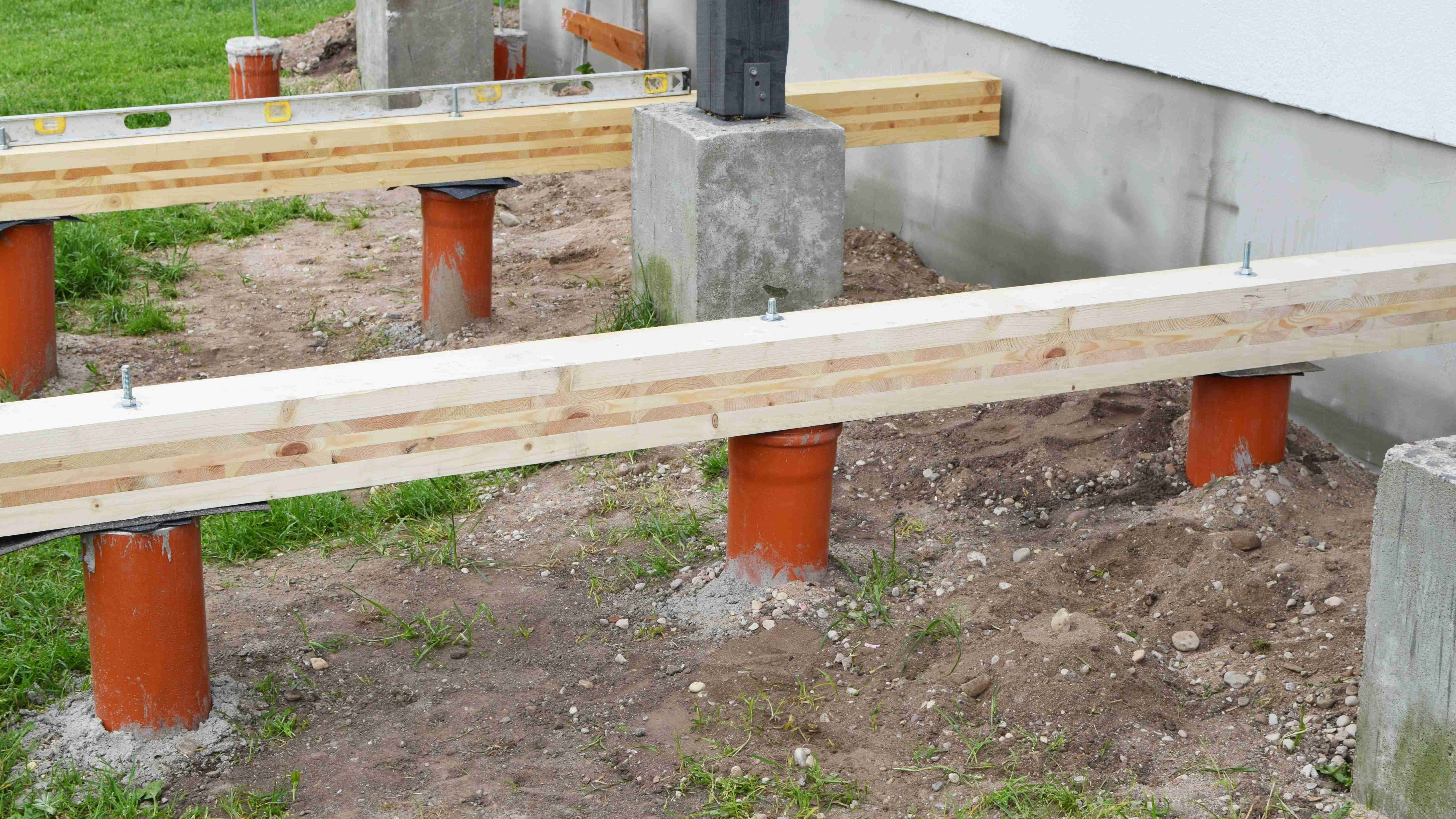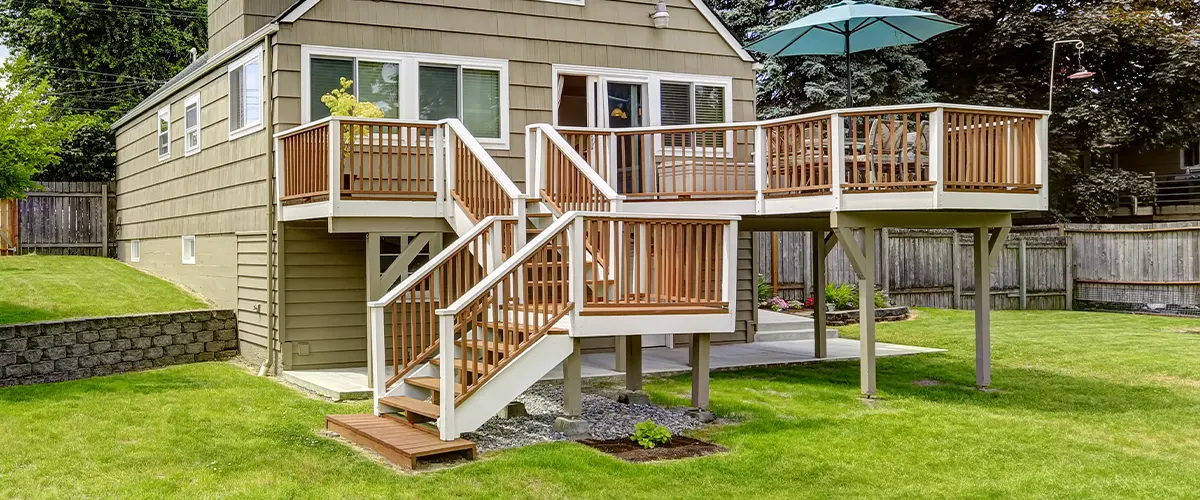Achieving Perfection: The Role of Correct Deck Footings in Your Task's Success
Wiki Article
Crucial Tips for Solid Deck Ground: A Comprehensive Guide
Developing a deck is a financial investment that needs mindful planning and attention to detail, especially when it comes to the ground. This guide will cover essential facets such as selecting the right products, evaluating dirt problems, calculating tons ability, identifying correct ground deepness, and achieving exact installment. Allow's dive into the world of solid deck ground and develop a structure you can rely on.Selecting the Right Deck Footing Materials
When picking the right deck footing materials, it is vital to think about the details needs and requirements of your job. The high quality and durability of the footings directly impact the stability and durability of the deck framework. There are numerous factors to consider when selecting deck footing materials.One essential consideration is the kind of soil in your area. Different dirt kinds have differing load-bearing capacities and water drainage properties. For instance, clay soils tend to keep water, while sandy soils drain pipes promptly. Understanding your dirt problems will certainly aid you pick footings that can efficiently support the weight of the deck and prevent concerns such as heaving or sinking.
An additional aspect to think about is the environment in your area. Extreme temperature levels, moisture levels, and freeze-thaw cycles can influence the efficiency of deck footings. In cold climates, for example, frost heave can cause footings to shift or crack. In such situations, using frost-resistant materials or setting up grounds below the frost line can aid alleviate these threats.
Furthermore, the dimension and design of your deck need to also affect your selection of footing materials. Larger or even more complex decks may call for deeper or strengthened grounds to guarantee ample assistance. Understanding the certain load demands of your deck will certainly aid you identify the ideal materials to utilize.
Ultimately, choosing the appropriate deck footing products involves cautious factor to consider of factors such as dirt conditions, climate, and deck layout. By taking these variables right into account, you can choose grounds that offer the required support, boost the security of your deck, and ensure its durability.
Effectively Assessing Dirt Conditions
To appropriately analyze soil conditions for your deck footing, it is essential to completely examine the load-bearing abilities and water drainage properties of the soil in your area. Recognizing the soil's ability to bear weight and its ability to drain pipes excess water will assist ensure the security and longevity of your deck.When analyzing the load-bearing capability of the soil, it is very important to take into consideration aspects such as dirt thickness, type, and compaction. Various soil types have varying load-bearing capabilities, with compressed soils normally supplying far better assistance than loosened or sandy soils. Carrying out a soil test can supply important details about the dirt's ability to support the weight of your deck.
Additionally, reviewing the drain residential properties of the soil is vital to avoid water buildup and possible damage to your deck - Deck Footings. Poor water drainage can lead to moisture accumulation, which can deteriorate the structure and create architectural issues. It is necessary to analyze the dirt's capability to drain water effectively to prevent these problems
Consulting with a specialist engineer or soil expert can considerably aid in effectively examining dirt problems for your deck ground. They can provide experienced advice and support, guaranteeing that you choose the proper ground style and materials based on the particular attributes of the dirt in your area. Putting in the time to thoroughly analyze dirt problems will help you construct a strong and durable deck.
Calculating Load Ability for Grounds
One vital action in making sure the stability of your deck is to accurately calculate the load ability for your grounds. Deck Footings. The lots capability describes the maximum quantity of weight or tons that the footings can safely sustain without causing any type of architectural damage or failure. Calculating the load ability for grounds involves thinking about numerous aspects such as the size and kind of grounds, the kind of dirt, the dimensions and weight of the deck, and the live tons and dead load that the deck will certainly be subjected toTo determine the tons capability, it is vital to seek advice from regional building regulations and policies as they supply details standards and needs for deck construction. These codes consider variables such as dirt bearing ability, frost deepness, and minimal ground measurements. Furthermore, it is critical to involve the solutions of an architectural designer or a specialist service provider who can perform the necessary calculations and analyses to make certain the safety and security and security of the deck.
When determining the tons capacity, it is important to accurately determine the real-time tons and dead load that the deck will experience. The real-time lots refers to the weight of people, furnishings, and any type of other items that will certainly be put on the deck, while the dead lots refers to the weight of the deck itself. By accurately determining these lots and thinking about all appropriate factors, you can make certain that your footings are effectively developed to sustain the weight and maintain the security of your deck.
Ensuring Appropriate Ground Depth
Appropriate footing depth is important for guaranteeing the security and durability of your deck. The depth at which the grounds are installed straight influences the architectural integrity of the deck, as it establishes how well the grounds can withstand the pressures exerted by the deck and the dirt below it.When establishing the proper footing deepness, try these out numerous elements must go to website be thought about. These consist of the kind of dirt, the local climate, and the lots capacity needed for the deck. Generally, footings need to be placed listed below the frost line to stop any type of heaving or changing due to freezing and thawing cycles. In locations with large clay soil, deeper footings may be needed to give sufficient assistance.
To figure out the proper footing depth, it is suggested to speak with an architectural designer or structure inspector who can evaluate the certain problems of your website and provide assistance based on local building ordinance and laws. They will certainly consider factors such as dirt make-up, water table level, and anticipated lots to establish the minimum needed ground deepness.
Setting Up Footings With Precision
Mounting grounds with precision is important for guaranteeing the stability and architectural stability of your deck. Correctly installed grounds give a strong foundation, ensuring that your deck can withstand the weight of furnishings, people, and other lots. To set up footings with accuracy, there are a number of essential actions to comply with.Firstly, it is essential to properly mark the location of each ground. This can be done by utilizing a string or chalk line to develop a clear rundown. By determining and marking the precise positions, you can make certain that the footings are equally spaced and lined up.
Following, you need to dig the openings for the footings. It is crucial to dig them to the appropriate depth and size, as defined by regional structure codes official site and guidelines. This will supply adequate assistance and prevent the deck from sinking or moving in time.
Once the holes are dug, it is very important to degree and small the soil at the end of each hole. This will develop a steady base for the ground to sit on and stop any kind of settling or motion.
After preparing the openings, you can wage putting the concrete. Use a concrete mix that is ideal for footings and comply with the supplier's instructions for mixing and putting. Guarantee that the concrete loads the openings entirely and is level with the ground surface.
Finally, permit the concrete to cure correctly prior to continuing with the construction of your deck. This will make certain that the grounds are steady and solid, giving a secure foundation for your deck.

Conclusion
Finally, ensuring strong deck ground is important for the stability and longevity of a deck framework. By picking the proper footing products, analyzing dirt conditions, computing tons ability, and setting up footings with accuracy, the danger of structural failing can be lessened. Following these essential pointers will certainly help develop a solid foundation for any deck task.Comprehending your dirt problems will aid you choose grounds that can successfully support the weight of the deck and protect against problems such as sinking or heaving.
Consulting with an expert designer or soil professional can considerably aid in correctly examining dirt conditions for your deck footing. Computing the lots capability for grounds entails considering different factors such as the dimension and type of footings, the kind of dirt, the dimensions and weight of the deck, and the real-time load and dead tons that the deck will be subjected to.

Report this wiki page